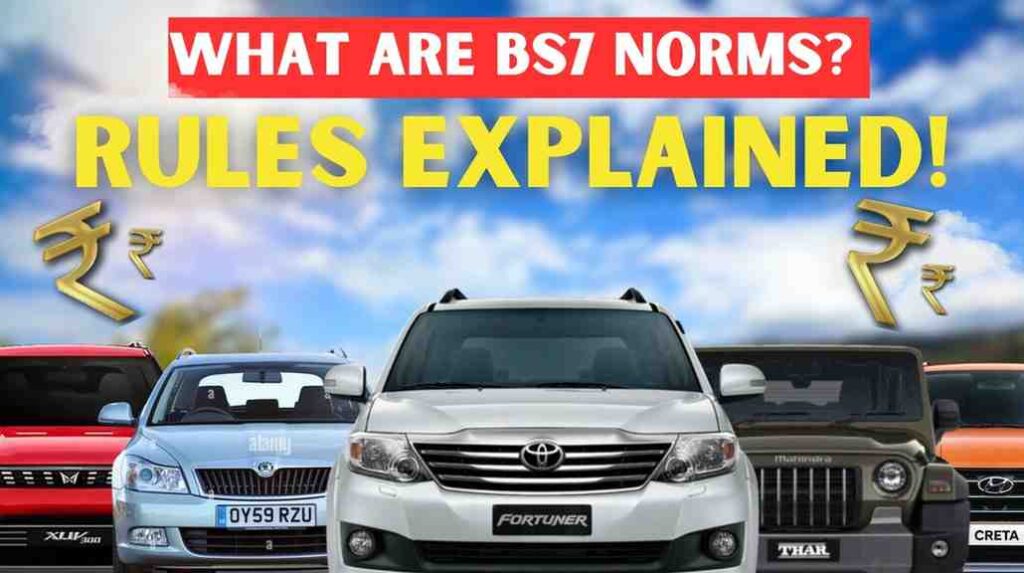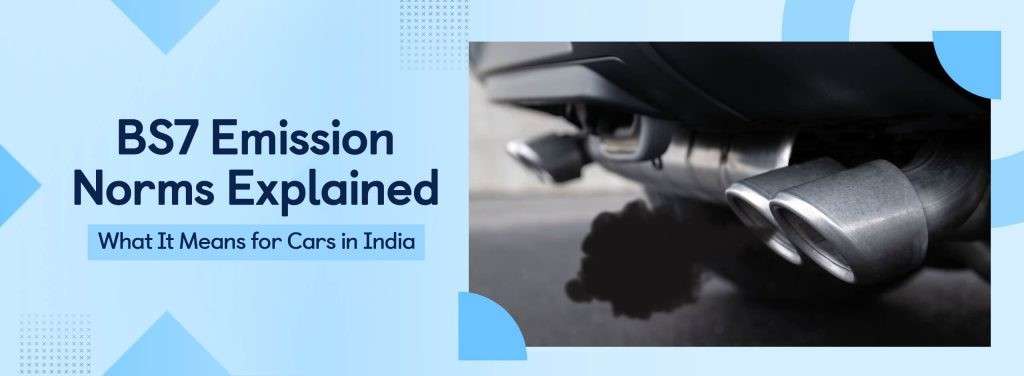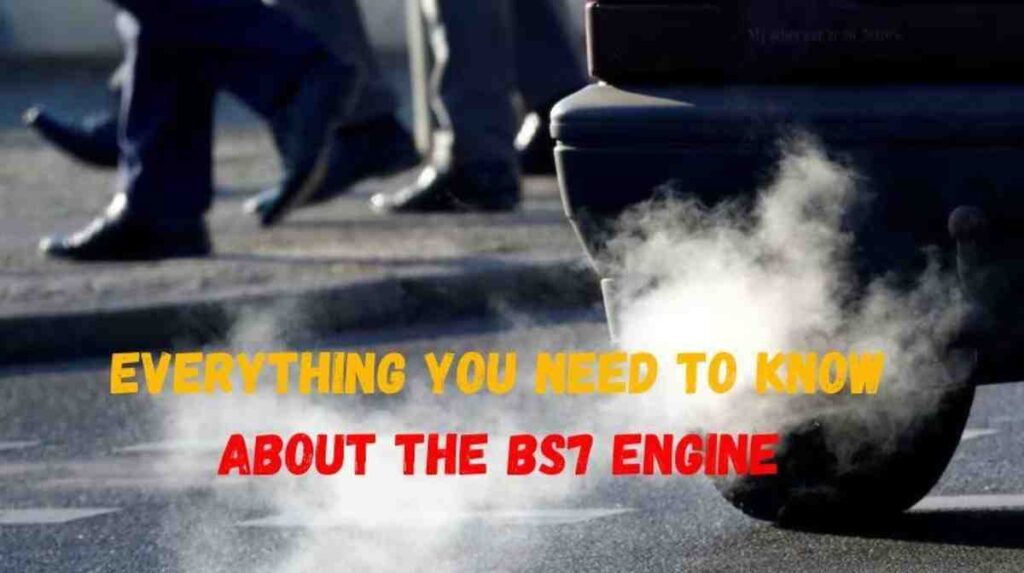
Table of Contents
As the automotive industry evolves, environmental concerns and fuel efficiency have taken center stage. In India, emission norms play a crucial role in regulating the pollution caused by internal combustion engines. The upcoming BS7 norms, short for Bharat Stage 7 Emission Standards, represent the next major step in this journey. This article covers everything you need to know about BS7 norms, including their expected implementation, impact, and how they differ from previous standards.
What Are BS7 Norms?
BS7 norms are the seventh iteration of the Bharat Stage (BS) emission standards set by the Indian government to regulate air pollutants from vehicles. These norms are modeled after European emission standards (Euro norms) and are formulated by the Central Pollution Control Board (CPCB) under the Ministry of Environment, Forest and Climate Change.
India transitioned to BS6 norms in April 2020, skipping BS5 to align more closely with global standards. BS7 norms are expected to take this further by enforcing stricter limits on emissions such as NOx (Nitrogen Oxides), PM (Particulate Matter), and CO2 (Carbon Dioxide), particularly from diesel and petrol engines.
Why Are BS7 Norms Important?
BS7 norms are being developed to address growing environmental concerns, including:
- Air Pollution: India is home to many of the world’s most polluted cities. Vehicle emissions are a major contributor to urban air pollution.
- Climate Change: Reducing CO2 emissions is crucial in the fight against climate change.
- Public Health: Exposure to pollutants like NOx and PM can cause respiratory illnesses, heart disease, and even premature death.
By enforcing tighter regulations, BS7 norms aim to reduce emissions, improve fuel efficiency, and push the adoption of cleaner technologies such as hybrid and electric vehicles.

Expected Implementation Date
As of now, the official launch date for BS7 norms has not been finalized. Industry experts anticipate that BS7 could be implemented sometime between 2027 and 2030, allowing manufacturers enough time to develop compliant technologies.
Mahindra Thar Roxx Waiting Time Slashed: Here’s the New Delivery Timeline! 2025
Key Features of BS7 Norms
While the exact specifications are yet to be officially released, based on the progression from BS6 and global trends, BS7 norms are expected to include:
1. Stricter Emission Limits
BS7 will likely lower permissible levels of harmful gases such as:
- NOx
- PM (Particulate Matter)
- Hydrocarbons (HC)
- Carbon Monoxide (CO)
- Ammonia Slip (NH3)
2. Real Driving Emissions (RDE) Testing
First introduced in BS6.2 (also known as BS6 Phase 2), RDE testing checks vehicle emissions in actual driving conditions instead of laboratory environments. BS7 norms are expected to enhance RDE standards, making them more rigorous and widespread.
3. OBD 3 (On-Board Diagnostics)
BS7 will likely mandate OBD 3 systems, which are more advanced than the OBD 2 systems currently used. These will offer real-time tracking of vehicle emission levels and notify drivers of any irregularities.
4. Fuel Efficiency Targets
BS7 could introduce Corporate Average Fuel Economy (CAFE) standards with stricter targets to enhance overall fuel efficiency and reduce the carbon footprint.
5. Compatibility with Biofuels and Electrification
To support India’s green goals, BS7 norms may promote blending of biofuels and encourage hybrid and electric powertrains.

HOW WE CAN KEP THE VEHICLE SECURE FROM ABS LIGHT EMERGE
How BS7 Norms Will Impact the Auto Industry
Implementing BS7 norms will be a technological and financial challenge for automakers, especially in a cost-sensitive market like India. Here are some key expected impacts:
1. Increased Vehicle Prices
Due to the integration of advanced technologies like selective catalytic reduction (SCR), diesel particulate filters (DPF), and sophisticated engine management systems, vehicle manufacturing costs will rise, which may be passed on to consumers.
2. Phase-Out of Older Models
Some low-margin or older vehicle models that cannot be economically upgraded may be discontinued, leading to a more modern and efficient vehicle lineup.
3. Boost to EV Adoption
As compliance costs for ICE (internal combustion engine) vehicles rise, electric vehicles (EVs) may become more attractive in terms of total cost of ownership, thereby accelerating the shift towards EVs.
4. Greater Focus on Innovation
The norms will push manufacturers to invest in R&D, especially in clean energy solutions, lightweight materials, and digital monitoring tools.
How Consumers Will Benefit
- Cleaner Air: Reduced pollutants mean healthier cities and improved public health.
- Better Mileage: Stricter norms lead to more fuel-efficient vehicles.
- Advanced Technology: Vehicles will come equipped with smarter diagnostic tools and cleaner engines.
Challenges to Consider
- Infrastructure: Advanced emission control systems may require higher-grade fuels, which may not be available uniformly across India.
- Cost Burden: Initial vehicle prices will increase, potentially impacting low- and middle-income consumers.
- Implementation Timeline: Manufacturers and government agencies will need to collaborate effectively to ensure smooth rollout and compliance.
Conclusion
BS7 norms represent a significant leap forward in India’s journey toward sustainable and eco-friendly mobility. While the transition will involve technological upgrades and cost implications, the long-term benefits in terms of air quality, public health, and climate change mitigation make it a crucial move. As we await official announcements and timelines, it’s clear that BS7 will pave the way for a cleaner, greener automotive future in India.